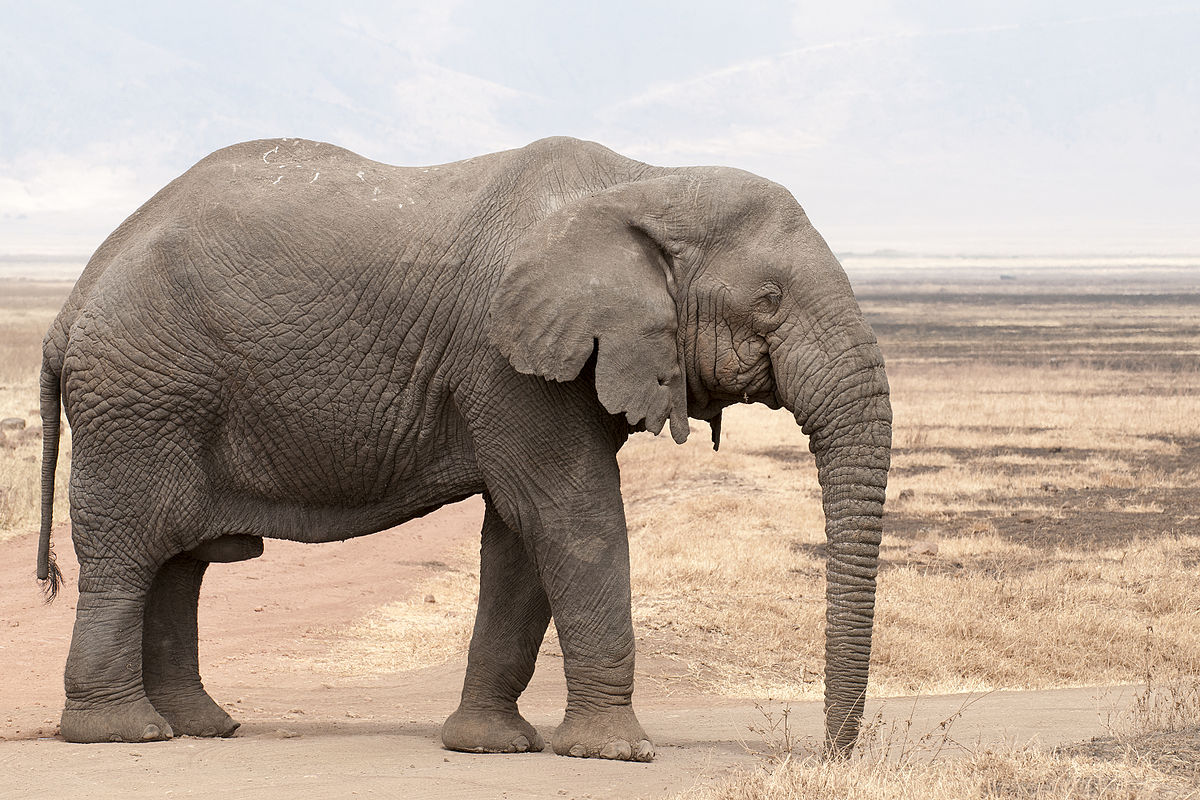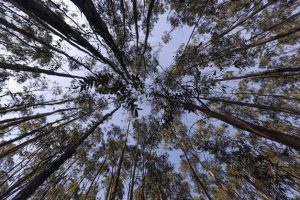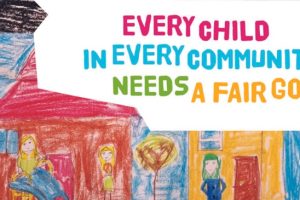
BY GETAHUN LEGESSE
The African elephant is the largest land animal. Their herds wander through 37 countries in Africa. These giant animals are easily recognized by their trunk that is used for communication and handling objects. And their large ears allow them to radiate excess heat. The upper incisor teeth develop into tusks in African elephants and grow throughout their lifetime.
There are two subspecies of African elephants—the Savanna (bush) elephant and the forest elephant. Savanna elephants are larger than forest elephants, and their tusks curve outwards. In addition to being smaller, forest elephants are darker and their tusks are straighter and point downward. Furthermore, the two species differ in the size and shape of their skull and skeleton.
Forest elephants, a distinct subspecies of African elephants, are uniquely adapted to the forest habitat of the Congo Basin, but are in sharp decline due to this sane reason- poaching for the international ivory trade. It is estimated that one quarter to one third of the total African elephant population is made up of forest elephants.
Jenny Cousins, Manager of East African Wild life Conservation Society, described African elephants as fascinatingly intelligent and socially complex animals, and one of Africa’s most iconic species. But living in close proximity to elephants can be a challenge and the demand for ivory continues, meaning that tens of thousands of elephants are killed every year for their tusks.
As to her, working in collaboration with local communities, governments and other nongovernmental organizations help to find solutions that work for everyone-ensuring the benefits of conserving elephants.
About 90 percent of African elephants have been wiped out in the past century – mainly due to the ivory trade. Elephant poaching, even though it is illegal, has been getting dramatically worse in parts of Africa in the last 10 years – mostly because of growing demand for ivory in China and the Far East. Around 20 thousand African elephants are being killed every year for their ivory – that is around 55 every day, as to Cousins.
Cousins said, “We are doing all we can to help, from monitoring herds to training community rangers and protecting habitat. In safeguarding elephants, we are also helping support local communities through measures to reduce human-elephant conflict and initiatives to support local livelihoods. We need your help to protect them”. Despite all the efforts, huge numbers of these unique-looking, intelligent animals are being brutally hunted to fuel the growing demand for their ivory, she added.
Kumera Wakjira, Director-General of Ethiopian Wildlife Conservation Authority (EWCA) told The Ethiopian Herald that the project known as ‘The Enhanced Management and Enforcement of Ethiopia’s Protected Area Estate’ focuses on five project sites namely Babile Elephant Sanctuary, Kafta-Shiraro National Park, as well as Chebera-Churchura, Mago and Omo national parks.
Kumera mentioned that the project aims to improve management at these five sites as they collectively are home to most of Ethiopia’s elephants (over 1,500 elephants). At Mago NP we are strengthening law enforcement in particular.
The project follows the National Elephant Action Plan closely with a set of recommendations to help protect Ethiopia’s elephant population.
The project is funded by the Global Environment Facility (GEF) through the UNDP and implemented by Ethiopian Wildlife Conservation Authority (EWCA) and the Ethiopian Biodiversity Institute (EBI). The total budget of the project for the five sites over five years is just over 6 million USD, he disclosed.
“For elephants, the main threat is poaching and habitat destruction. In order to combat both of these threats, we need strong law enforcement and the support of the local communities surrounding the project sites,” he explained.
As to him, the five project sites are those which contain most of Ethiopia’s elephants. Through improving management, strengthening law enforcement, and engaging with the local communities at these sites it is hoped the elephant populations will be better protected.
He also added that the project has set up an Environmental Crime Unit and regional task forces to combat wildlife crime. Both of these have a particular focus on stopping ivory poaching and trafficking. We are also introducing much stronger custodial sentences if criminals are caught with illegal wildlife trade.
“In safeguarding elephants, we are also giving support for local communities through mitigating measures to reduce human-elephant conflict and initiatives to support local livelihoods,” he said.
True, as documents indicate, each year tens of thousands of elephants are killed for ivory. At least 33 thousand elephants are killed for their tusks each year in a devastating wave of poaching that is sweeping across Africa. This elephant genocide is driven by demand for ivory as a symbol of wealth or prestige in Asia, the document further elaborated.
Thus, to stop the illegal killings of elephants and safeguard the population pushing for firm measures against poachers and traffickers is critical.
The Ethiopian Herald December 11/2020





